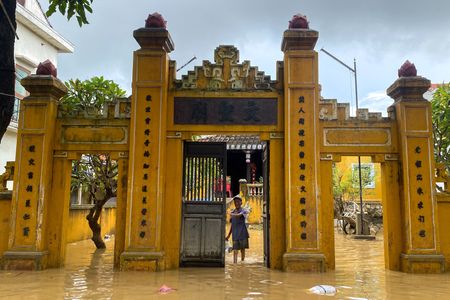HANOI (Reuters) -Tourists are returning to Vietnam’s ancient town of Hoi An as residents clean up mud and debris to reopen the UNESCO-listed site following floods that devastated the central region and killed at least 35 people.
Tourism and services, driven by accommodation, dining and ticket sales, form the backbone of Hoi An’s economy and contributed nearly two-thirds of regional income last year as the town welcomed more than 4.4 million visitors, including 3.6 million foreigners, official data showed.
Domestic and international visitors were seen strolling along the riverfront and visiting heritage landmarks from Saturday, despite most hotels, lantern shops and restaurants undergoing extensive cleaning to prepare for a full reopening ahead of the peak travel season.
The historic floods last week submerged Hoi An’s lantern-lit streets and centuries-old wooden houses, forcing hundreds of businesses to temporarily close.
While no official financial damage estimates have been released, small shop owners reported losses in the hundreds of millions of dong, which equates to thousands of U.S. dollars.
The nearby city of Thua Thien Hue, also impacted by the heavy rains, reopened its iconic citadel to tourists on Friday.
Authorities, however, continue to warn of rising river levels and potential renewed flooding as prolonged rains are expected in the coming days.
The floods also left five people missing and inundated more than 16,000 houses and 5,300 hectares (13,100 acres) of crops. Around 75,000 people are still experiencing power shortages, the government’s disaster agency said in a report.
Vietnam, prone to severe storms and flooding, frequently faces widespread property damage during its storm season, which typically lasts from June to October.
(Reporting by Phuong Nguyen; Editing by Jamie Freed)











